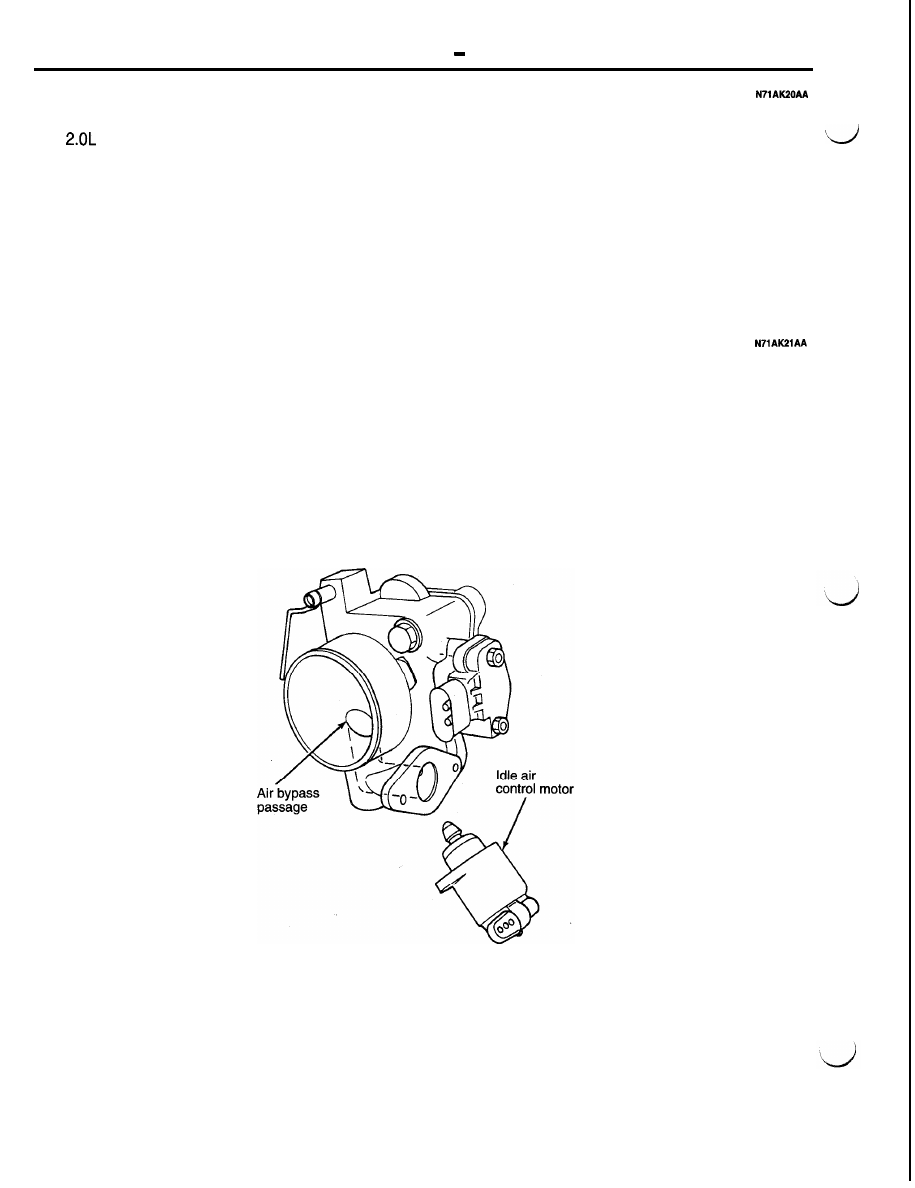Mitsubishi Eclipse. Technical Information Manual (1994) - part 12

1-26
ENGINE <NON-TURBO> Control System
ACTUATORS AND CONTROL
FUEL INJECTORS
The
engine uses electrically operated top feed
fuel injectors. The MFI relay (automatic shut down
relay) supplies battery voltage to the fuel injectors.
The PCM controls the ground path for each injector
in sequence. By switching the ground paths on and
off, the PCM fine-tunes injector pulse width. Injector
pulse width refers to the amount of time an injector
operates.
The PCM determines injector synchronization from
the camshaft position sensor and crankshaft position
IDLE AIR CONTROL MOTOR
The idle air control (IAC) motor is mounted on the
throttle body. The PCM operates the idle air control
motor. The PCM adjusts engine idle speed through
the idle air control motor to compensate for engine
load or ambient conditions.
The throttle body has an air bypass passage that
provides air for the engine during closed throttle
idle. The idle air control motor pintle protrudes into
the air bypass passage and regulates air flow
through it.
sensor inputs. The PCM grounds the MFI and fuel
pump relays after receiving the camshaft position
sensor and crankshaft position sensor inputs.
The PCM energizes the injectors in a sequential
order during all engine operating conditions except
start-up. For the first injector pulse width during
start-up, all injectors are energized at the same
time. Once the PCM determines crankshaft position,
it beings energizing the injectors in sequence.
The PCM adjusts engine idle speed by moving the
IAC motor pintle in and out of the bypass passage.
The adjustments are based on inputs the PCM re-
ceives. The inputs include the throttle position sen-
sor, crankshaft position sensor, coolant temperature
sensor, vehicle speed sensor and various switch
operations (brake, park/neutral, air conditioning,
power steering).
AFU0079